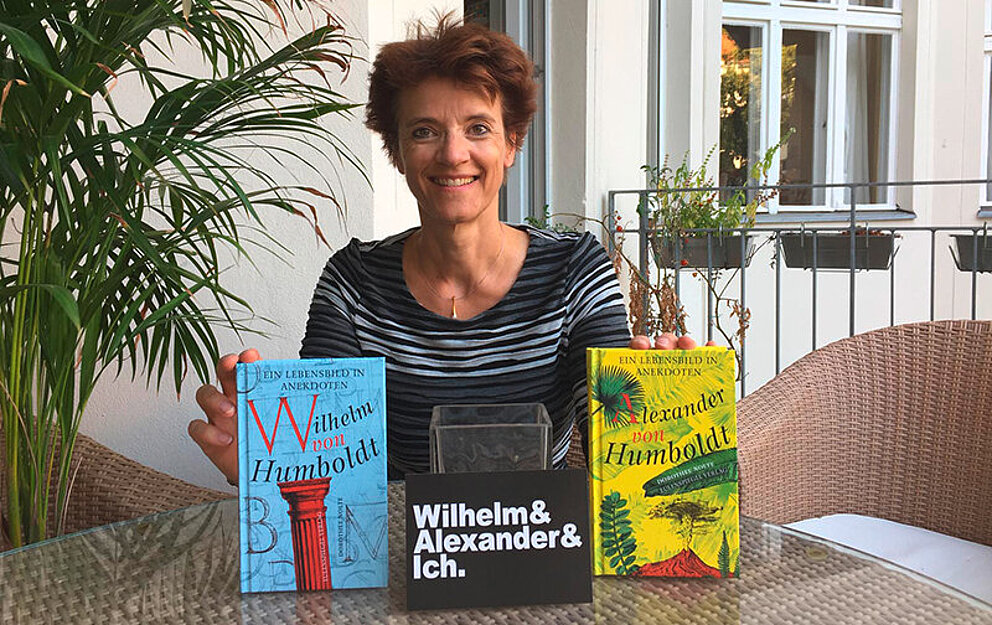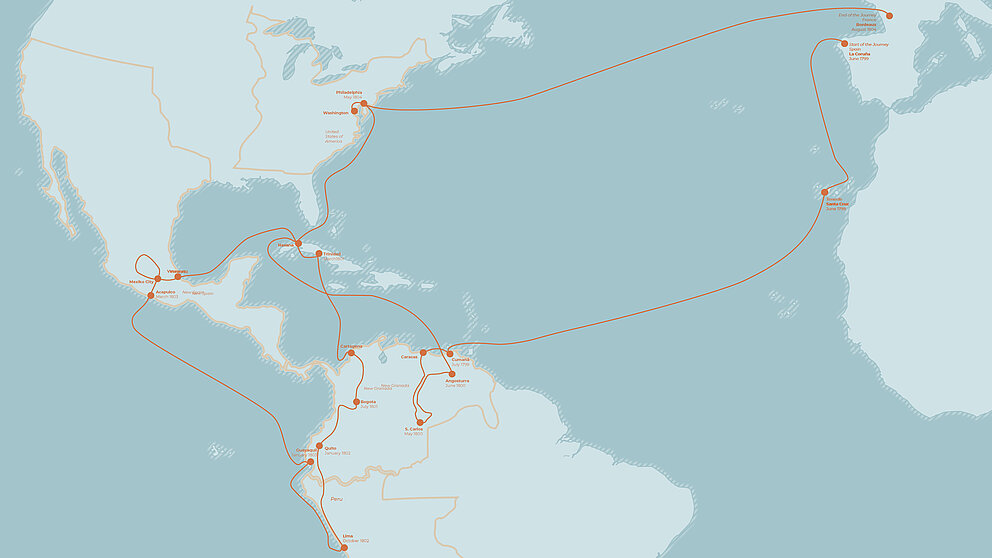Jump to the content
- {{#headlines}}
- {{title}} {{/headlines}}

The texts are taken from the book Alexander von Humboldt – Ein Lebensbild in Anekdoten (Alexander von Humboldt: A Life Told in Anecdotes) with the kind permission of the author Dorothee Nolte.
Stage 1: Departure for Tenerife
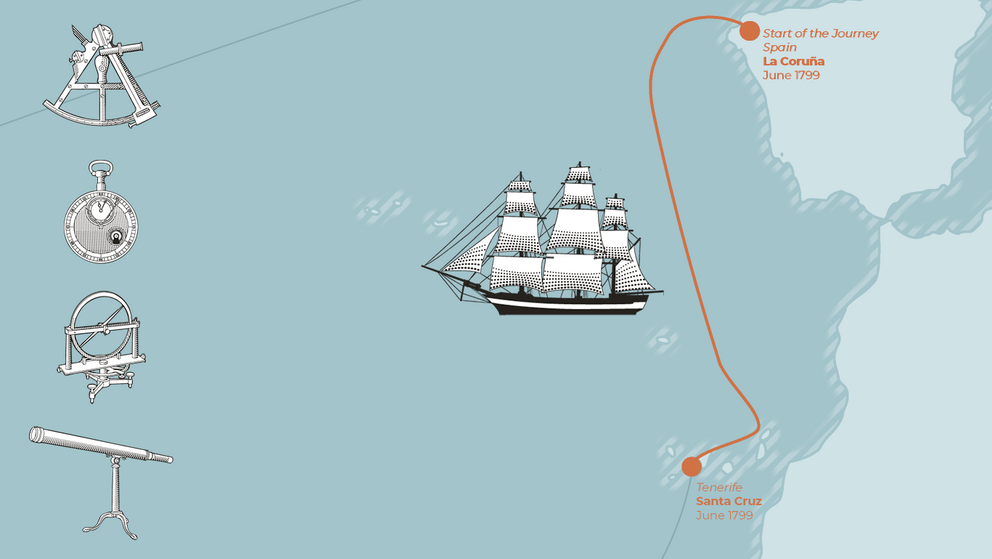
The Urge to Work
“It is a momentous experience leaving Europe behind for the first time,” writes Alexander with a degree of elation. Will he ever see his brother or his friends again? Who knows – and who cares at that moment, because the corvette Pizarro is sailing for the Canary Islands. But it is a journey that is not without danger, because Britain and Spain are at war and they could be attacked by ships of the Royal Navy. For that reason, they cannot show any lights at night, a precautionary measure that brings them “deadly boredom”. Because Alexander wants to spend all his time taking measurements, conducting research and making discoveries. In his luggage, he has measuring instruments that are highly advanced for the era. There are 50 of them, which is more than any previous explorer – sextants, quadrants, telescopes, a marine chronometer, a barometer, a thermometer and all sorts of devices with amazing names such as inclinatorium, declinatorium, cyanometer, eudiometer, hydrometer and hyetometer. What is the temperature of the water in the sea, what are the positions of the stars, in what direction do the ocean currents flow, what effect does electricity have on jellyfish, and what shade of green is the seaweed at different depths? With so much work to be done, he finds the dark nights immensely frustrating. “It was all the more annoying to me because my constitution was such that I never suffered from seasickness, and every time I made a sea voyage, I always felt a great urge to work.” Alexander prefers to work late into the night – throughout his whole life, he needs relatively little sleep.
Stage 2: Crossing the Atlantic
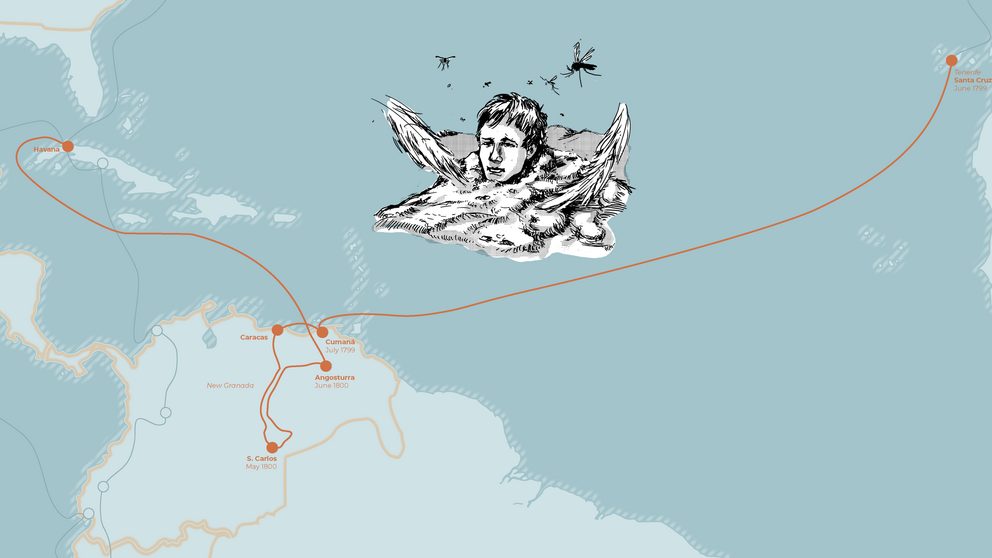
Maddening Poison
In fact, the biggest challenge is the mosquitoes that keep tormenting them. Hands and face swell up, the mosquito bites prevent Alexander from writing: “One cannot keep the quill steady, so maddeningly painful is the poison of these insects.” How is one supposed to perform measurements and take notes? “All our work had to be done by an open fire, in an Indian hut, where no sunlight penetrates and into which one has to crawl on one’s stomach. But here the smoke is suffocating, even though one suffers less from the mosquitoes.” The Native Americans have developed their own methods to protect themselves from the torments of these insects: “In Maipures, we took refuge with the Indians in the middle of a waterfall, where the waters rage and the spray drives off the insects. In Higuerote, they dig themselves into the sand at night, so that only their heads protrude and the whole body is covered with three to four inches of earth. You might think it was a fable until you see it with your own eyes.” It’s enough to make most of us wish that these creatures were absent from the natural world. But Alexander takes a more sanguine view: “Everything is interrelated, nothing stands alone, and a shared bond embraces all organic nature.” He even grants mosquitoes “despite their smallness, a significant role in the tropical zone and therefore in the natural order of things”.
Stage 3: From Cuba to Peru
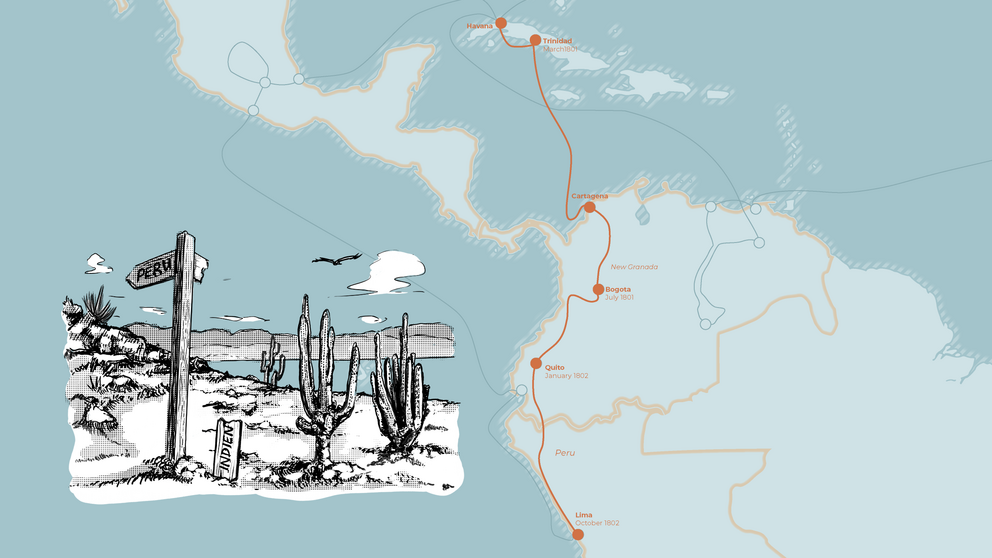
Fake News
After their first major expedition, Alexander and Bonpland spend some time in Cuba. Humboldt reads in a newspaper that the French captain and explorer Nicolas Thomas Baudin will be stopping off in Peru before continuing across the Pacific in the general direction of the Philippines. A chance to circumnavigate the globe and to explore Asia, which Humboldt is determined not to miss. So he sets off with Bonpland to the south, intending to explore the Andes on the way. Later he will say, “As a result of an incorrect newspaper report, Bonpland and I have travelled over 800 miles in a country that we did not plan to visit.” Because Baudin takes a different route, bypassing Lima, and Humboldt’s dream of seeing India comes to naught.
Stage 4: Across the Pacific to Mexico
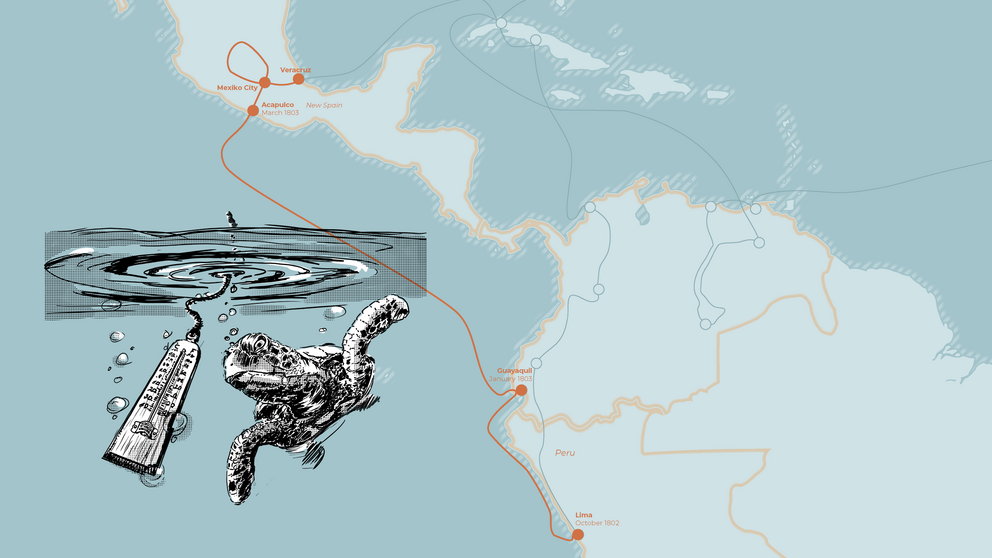
Humboldt Current
In Lima, they encounter locals who are characterised by “a lively mind and permissive thinking” and by strange manners: “The ladies there chew a five-inch-long root that hangs from their mouths. It is a horrible sight.” They then return north by ship. Humboldt continues to measure the temperature of seawater in the Pacific and discovers that there is a coastal current that is seven to eight degrees colder than the water further out. Years later, this current is named after him – the Humboldt Current. He raises a modest protest: “The current was already known to all the fishermen from Chili to Payta!” Yes, but they had not measured it. When it comes to measuring, he has no equal.
Stage 5: To the USA and back to Europe
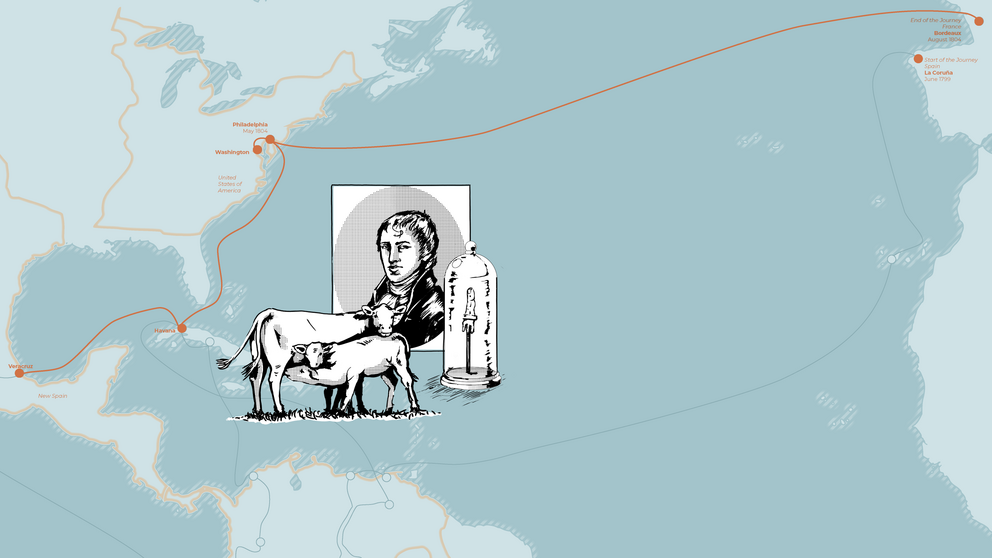
Humboldt in the Cabinet of Curiosities
Charles Willson Peale, a portrait and landscape painter, is in the process of setting up the first natural history museum in the United States and asks Humboldt to sit for a portrait. Peale states that Humboldt “speaks very good English with a German accent” and mixes English, French and Spanish in a torrent of speech. Alexander’s portrait goes on display in a ‘Cabinet of Curiosities’, where the other exhibits include the index finger of a gunman and a stuffed five-legged cow with two tails, suckling a two-headed calf. And so Humboldt returns to Europe as ‘a curiosity’ as well as a much-feted hero.
